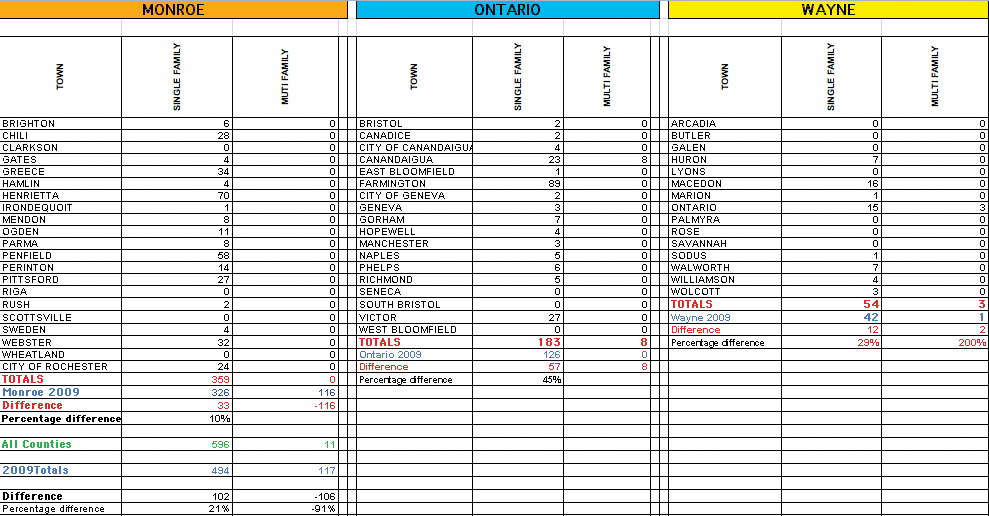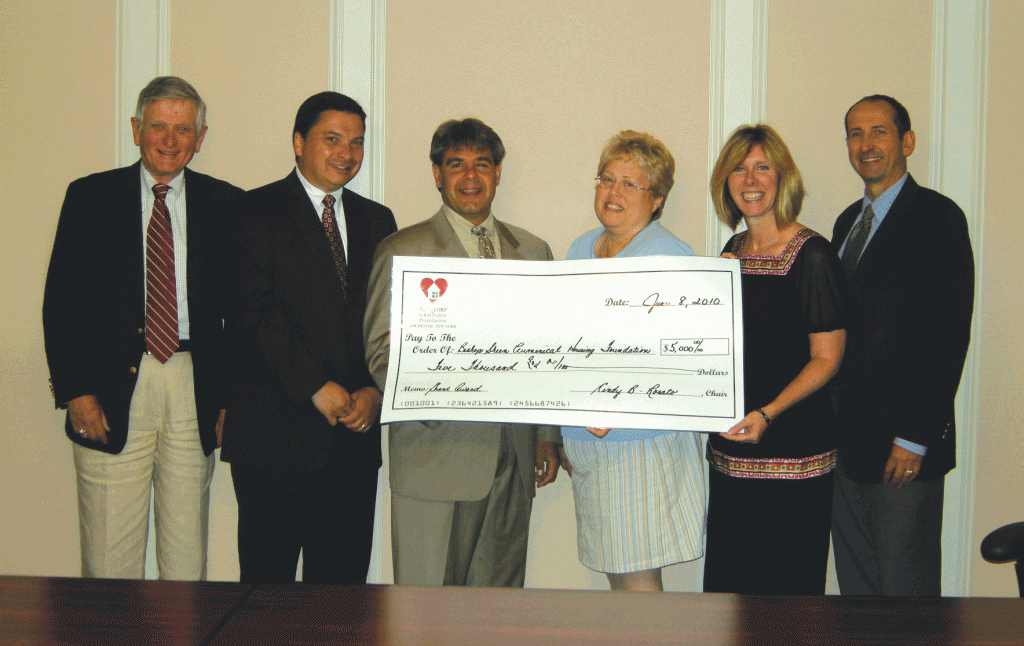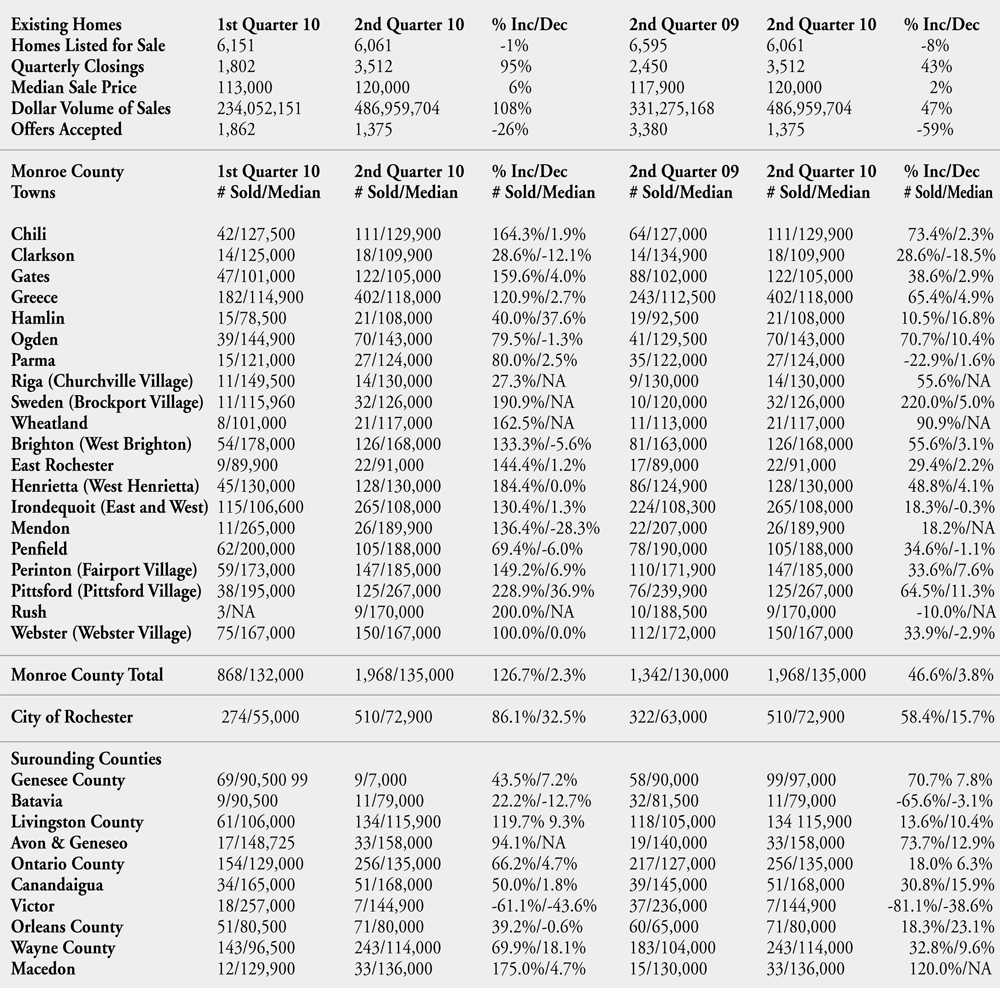As more home owners have fallen behind on their mortgage payments, foreclosures and short sales have become more of a common occurrence in the Greater Rochester region and across the nation. A short sale is a sale of a property where the sale price falls short of the balance owned on the loan. The lender must agree to and accept less than the total amount due. In some instances, a short sale may be a better alternative to foreclosure because it helps avoid hefty fees for the lender and has less of a dramatic impact on a borrower’s credit rating.
While there are loan modification and other programs that can assist homeowners, not everyone will qualify. For many who are at risk of losing their home through foreclosure, a new program from the United States Treasury Department may help.
In February 2009, the Obama Administration introduced the “Making Home Affordable Program.” The plan is intended to stabilize the housing market and help struggling homeowners remain in their homes. One option is to modify mortgages to make them more affordable through the Home Affordable Modification Program (HAMP). While many homeowners have received help through HAMP, far too many will not be able to keep their home even with a loan modification. For those homeowners, the Treasury Department has established a new short sales program called the Home Affordable Foreclosure Alternatives Program (HAFA). HAFA is designed to streamline short sales by providing a uniform process, standard forms, and incentives for families and their mortgage servicers to complete the process. It offers homeowners who sell their homes under HAFA, $3,000 to help cover their moving costs.
On June 1, 2010, Fannie Mae and Freddie Mac released guidelines for implementing the HAFA program. Servicers were required to implement these policies no later than August 1, 2010. While largely consistent with the HAFA guidelines for non-GSE mortgages, Fannie and Freddie have each made some important differences. To be eligible under the non-GSE HAFA program, the borrower must be delinquent or default must be reasonably foreseeable. Under Freddie’s requirements, a borrower must be more than 60 days delinquent and have cash reserves less than the greater of $5,000, or three times the current monthly mortgage payment. Fannie allows borrowers to be at imminent risk of default. Fannie also prohibits a borrower from participating in HAFA, if the borrower has the ability to continue making the mortgage payments but chooses not to do so (sometimes called strategic default); has substantial unencumbered assets or significant cash reserves equal to or exceeding three times the borrower’s total monthly mortgage payment or $5,000, whichever is greater; or has high surplus income. Fannie and Freddie allow for servicer incentives of $2,200 for a short sale and $1,500 for a deed-in-lieu of foreclosure (DIL). This is in contrast to the $1,500 servicer incentive for both a short sale and a DIL for non-GSE mortgages. For both Fannie and Freddie, each subordinate lien holder in order of priority may be paid no more than 6% of the unpaid principal balance of its loan, until the $6,000 cap is attained. This policy remains unchanged from the non-GSE HAFA program. Consistent with the non-GSE HAFA program, Fannie and Freddie guidelines do not permit subordinate lien holders to require contributions from the real estate agent or borrower as a condition for releasing its lien and releasing the borrower from personal liability. 2
The Greater Rochester Association of REALTORS® recommends that anyone who is at risk of foreclosure or considering a short sale to first seek the advice of a real estate attorney or financial advisor who can discuss various options and alternatives to ensure that their best interests are protected.
*Some of the information contained in this article was provided by the National Association of REALTORS®


